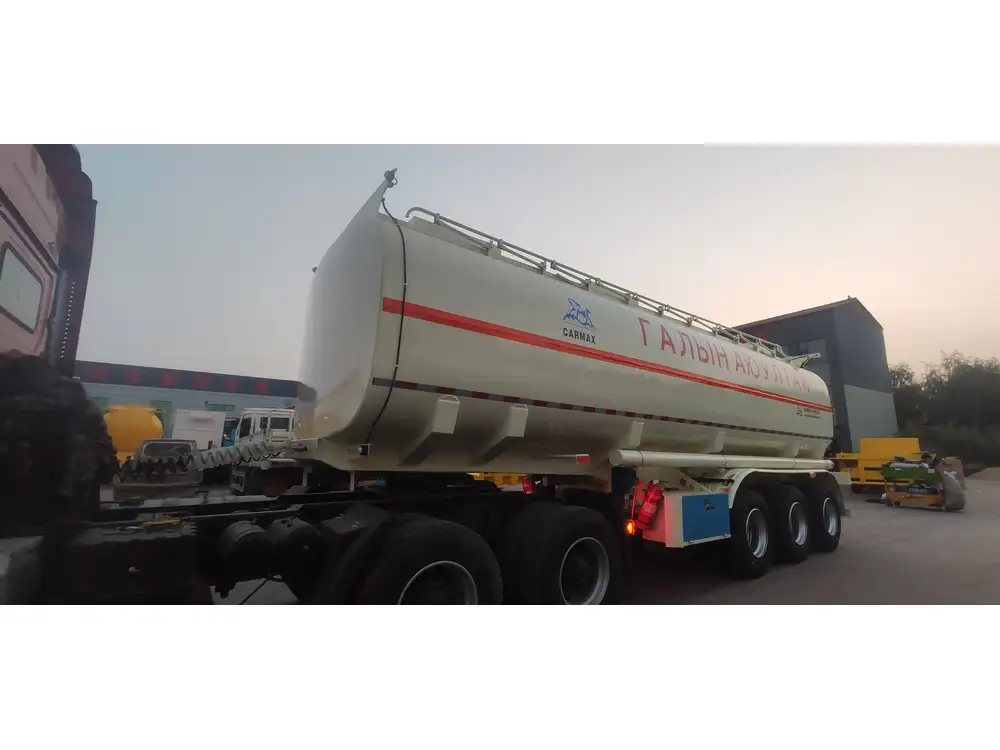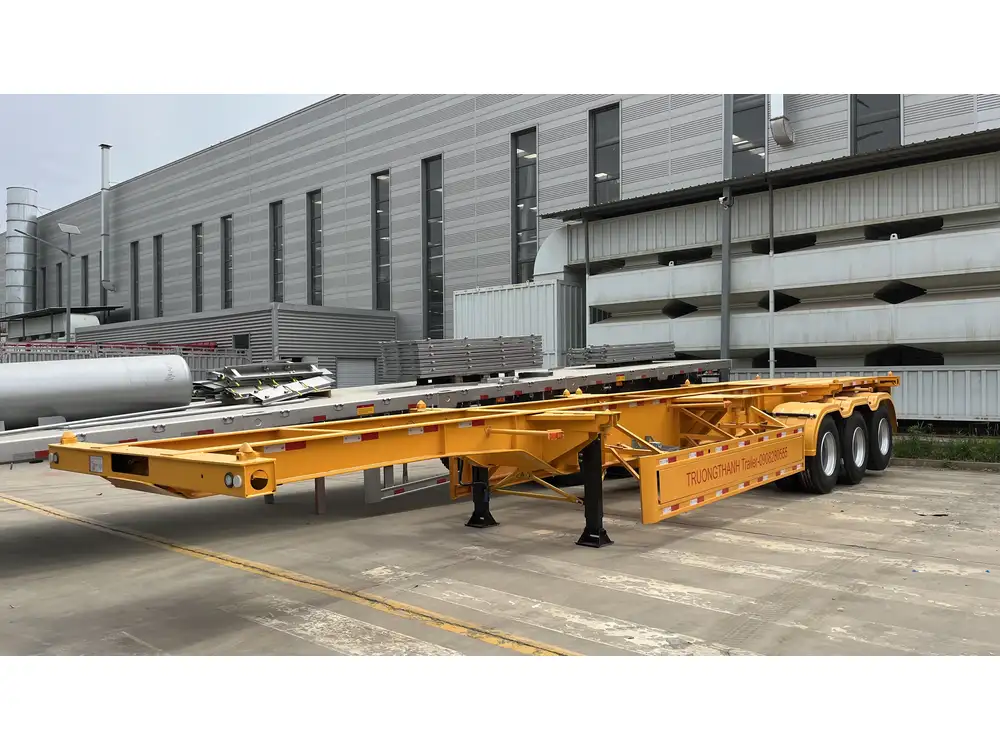When transporting livestock, especially cattle, understanding the capacity of your transport vehicle is crucial not only for the efficiency of your operations but also for the welfare of the animals. Semi-trailers are one of the most common types of transports used in the cattle industry. This article delves into how many cattle can typically fit in a semi-trailer, factors influencing this capacity, best practices for loading, and addressing common concerns about animal welfare during transport.
1. Semi-Trailer Overview
1.1. Types of Semi-Trailers Used for Cattle Transport
The design and construction of semi-trailers vary based on their intended use. For cattle transportation, two primary types of trailers can be considered:
| Type | Description | Use Case |
|---|---|---|
| Gooseneck Trailers | Feature a hinged front that connects to the tow vehicle, providing stability. | Often used for smaller operations or direct farm-to-market transport. |
| Livestock Trailers | Forested with slats for ventilation and specific compartmental arrangements. | Designed for larger cattle movements, ensuring welfare and safety. |

1.2. Dimensions and Design of Livestock Semi-Trailers
The dimensions of a typical livestock semi-trailer can vary, but standard models usually feature:
- Length: Ranges from 48 to 53 feet.
- Width: Generally about 8.5 feet.
- Height: Around 13.6 feet.
These standard dimensions can influence how many cattle can be loaded and safely transported.
2. Loading Capacity: How Many Cattle per Semi-Trailer?
2.1. Factors Affecting Cattle Capacity
Understanding the number of cattle that can be loaded into a semi-trailer hinges on several critical factors:
Cattle Size: Average weight and breed can significantly impact capacity. For instance:
Breed Average Weight (lbs) Average Space per Animal (sq ft) Angus 1,200-1,400 15-20 Holstein 1,400-2,000 20-25 Hereford 1,200-1,600 15-20 Trailer Design: The internal layout, partitioning, and height impacts how many animals can be physically accommodated.
Welfare Regulations: Depending on local regulations, specific guidelines dictate minimum space requirements for the animals being transported.

2.2. Average Calculation of Cattle per Trailer
On average, a standard 53-foot livestock trailer can safely carry approximately 20 to 30 head of cattle. Here is a breakdown based on average weight:
- Lightweight Cattle (400-600 lbs): Up to 40 head.
- Medium-Weight Cattle (600-900 lbs): Approximately 25-30 head.
- Heavyweight Cattle (900-1,300 lbs): Around 20-25 head.
This distribution provides a general guideline but can change based on the specifics of the load and the aforementioned factors.
3. Best Practices for Efficient and Safe Loading
3.1. Pre-loading Assessments
Before loading, conducting a thorough checklist can ensure the process runs smoothly. Consider the following:
- Health Checks: Ensure all animals are fit for transport.
- Weight Assessments: Knowing each animal’s weight will help avoid exceeding trailer capacity.
- Trailer Inspection: Check for any damages that could risk animal safety.

3.2. Loading Procedure
- Organized Loading: Load heavier animals first, followed by lighter ones, to balance the weight correctly.
- Space Management: Ensure space inside the trailer is maximized without overcrowding, which can lead to stress and injuries.
- Utilization of Dividers: Use dividers to help stabilize the animals and prevent shifting during transit.
3.3. Post-loading Practices
- Secure Doors and Ventilation: Ensure all doors are locked and that the trailer has proper ventilation to maintain a comfortable environment.
- Frequent Checks: Monitor animal condition during transport to address any potential issues immediately.
4. Legal Regulations and Welfare Considerations

4.1. Compliance with Animal Welfare Acts
Transporting cattle is highly regulated to ensure welfare, including:
- Space Requirements: Ensure each animal has adequate space to avoid injury.
- Transport time limits: Know the maximum transport duration without rest breaks, as stipulated by local animal welfare legislation.
4.2. Importance of Animal Welfare During Transport
Animal welfare during transport is critical. Proper handling can reduce stress and injury risks, which, in turn, supports better health outcomes post-transport:
- Provide Rest: Adequate stops for young or stressed animals can help recover.
- Temperature Control: Monitoring and managing internal trailer temperatures is vital for cattle comfort.
5. Troubleshooting Common Issues in Cattle Transportation

5.1. Overcrowding Consequences
Signs of Overcrowding:
- Increased vocalization.
- Movement restrictions leading to potential injuries.
Solutions:
- Regularly assess cattle weight before loading.
- Adjust the number of cattle based on their size and condition.
5.2. Health Concerns During Transit
Common Issues:
- Dehydration: Animals can become dehydrated quickly during transport.
- Stress: High-stress levels can lead to health problems post-transport.
Preventive Measures:
- Always provide water during longer hauls.
- Utilize calming methods such as appropriate penning to reduce anxiety.
6. Conclusion: Enhancing Your Cattle Transport Operations
To enhance your operations regarding transporting cattle, understanding the underlying principles of loading capacity and animal welfare is imperative. A thoughtful approach, considering both the numbers and the ethical responsibilities involved in cattle transport, can lead to better outcomes:
- Regular Training for Handlers: Ensuring those involved in loading and transport understand animal behavior can reduce stress.
- Investing in Quality Trailers: High-quality and well-ventilated trailers can maximize space and ensure a safe journey for the cattle.
- Continuous Monitoring and Assessment: Staying updated with industry guidelines and continually assessing your practices can ensure compliance and the well-being of the animals.
By adhering to these guidelines, manufacturers and operators can not only ensure compliance with legal standards but also enhance the overall efficiency of cattle transportation, leading to better productivity and outcomes.
Through this structured exploration of cattle transport capacity, practices, and compliance, we aim to provide valuable insights for manufacturers and operators. Enhanced understanding leads to improved practices and better outcomes, both for the cattle being transported and the industry as a whole.



